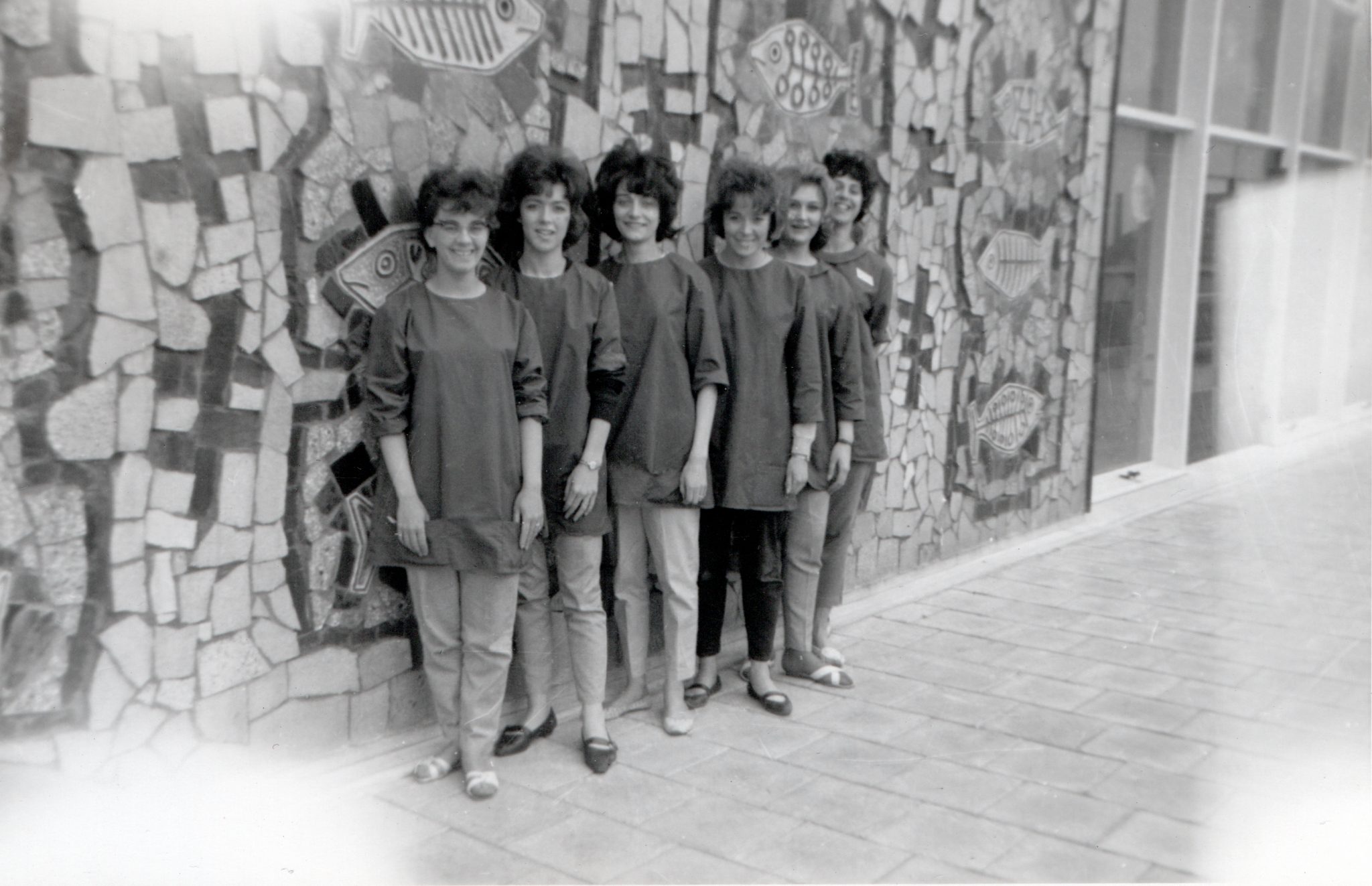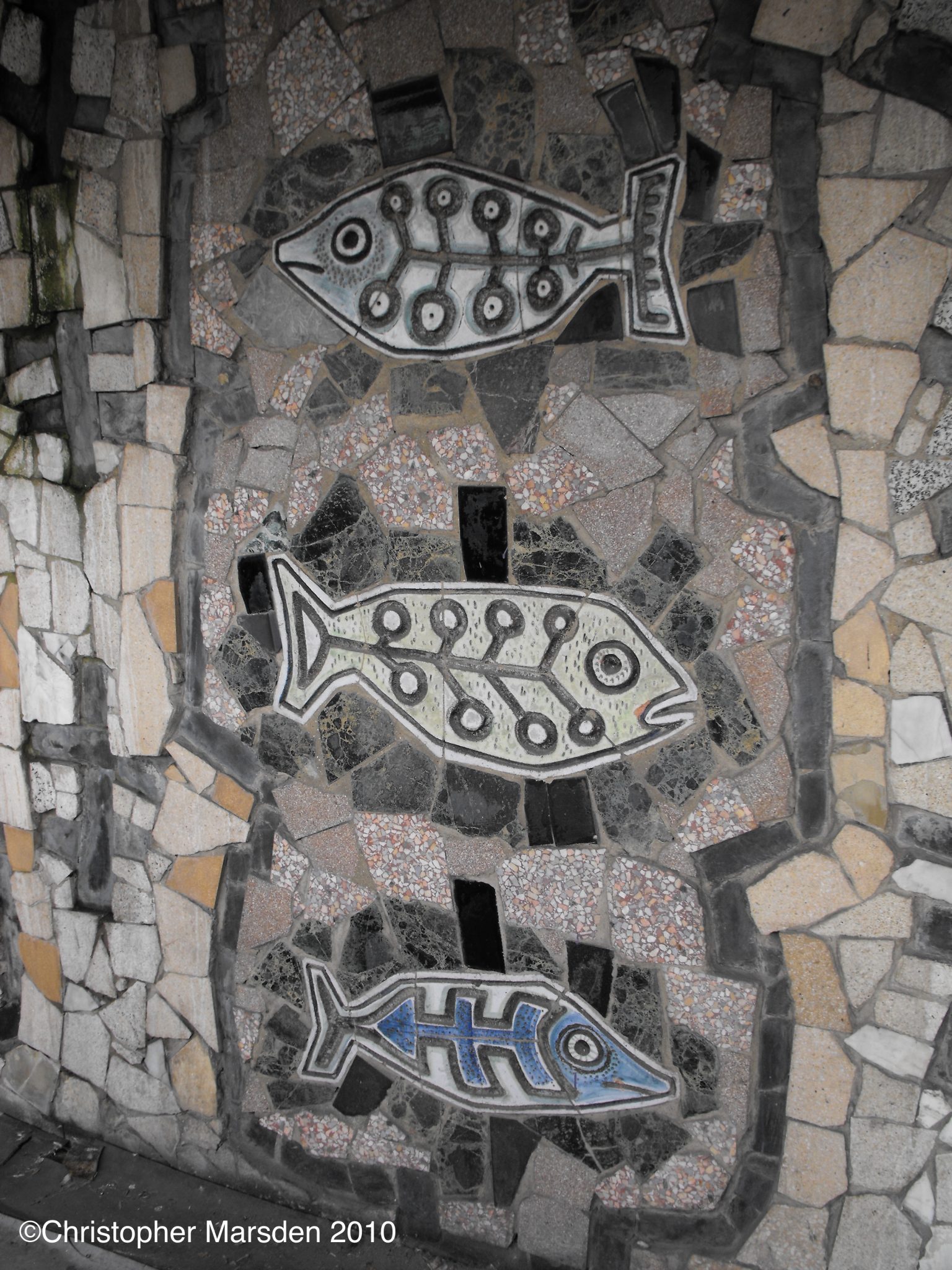A film is being made to celebrate a monument of co-operation – and an icon of UK modernist architecture – the Three Ships mural in Hull city centre.
Artist Esther Johnson is exploring the landmark’s history in her film, Ships in the Sky, and gathers a range of voices to pay tribute to the structure – including the architect who created the building it adorns.
Designed by Alan Boyson in 1963 for a Hull & East Riding Co-operative Society store, the mural is a curved concrete screen depicting three stylised trawlers. The structure spells ‘HULL’ in the masts and bears the motto ‘prosper through industry’.
The mosaic comprises 1,061,775 individual cubes. It was commissioned by the Co-operative Wholesale Society (now the Co-op Group) to celebrate the city’s maritime heritage. Boyson was himself connected to the co-operative movement, his father being manager of the Marple Co-operative Society.

Former chief architect Philip Andrew says the building had a steel-frame structure – and all steelwork had to be cased in concrete to protect it against fire. Interviewed by Ms Johnson, he said he hoped the mural would be preserved, and discussed his work on the project and his friendship with Boyson, who recommended him for the job.
“I was only ever involved in commercial buildings,” he said. “I never designed a house for anybody, nobody ever asked me to, so I’ve grown accustomed to seeing buildings demolished, which don’t seem to me to have been there long enough, and if I like the building I’m very melancholic about it.”
The building, which also hosted a nightclub for a few years, was vacated by the CWS in 1984. It was converted into a BHS store in 1985 and vacated in 2016 following the retail chain’s collapse.
The structure is currently awaiting demolition although the council has indicated the mural itself will be preserved.
Johnson’s film forms part of an oral history project supported by the Art and Design Research Centre at Sheffield Hallam University, and Hull Trinity Old Boys’ Association. It features interviews with former shoppers and employees of the Co-op and BHS, as well as the memories of construction workers and mosaicists who worked on the building. Locals also share their experiences attending gigs at the nightclub on the fourth floor.
One of those interviewed, former COUM Transmissions and Throbbing Gristle member Cosey Fanni Tutti, recounts her memory of seeing Jimi Hendrix at the Skyline Ballroom.
Related: How co-op architecture shaped Britain’s skylines
Ms Johnson is in touch with Hull Central Library about the project development and hopes that interviews conducted for the film can be included in the library’s ‘Untold Hull’ oral history archive. Growing up in Hull, she says that seeing the mural, a piece of public art, played a crucial formative role in her wanting to study art.
“My dad comes from a long line of trawler-men and seafaring folk,” she said.
“While sitting with him opposite the mural on Saturday lunchtimes – eating fried egg sandwiches from the local deli Fletchers – he would translate the Latin resper industriam prosperae, success through industry, and tell me tales of his first trawler trip at the age of 12 to Murmansk and beyond the Arctic Circle.
“Aside from an avid fondness for Boyson’s graphic modernist aesthetic, I associate the mural with stories of fantastical travels to far-off lands, voyages that all began in Hull. The Three Ships has almost become a metaphor for where life might lead me; its destruction would break my heart.”
Related: Co-op News’ special edition on co-op buildings
Ms Johnson studied at the Royal College of Art in London. In 2008 she was nominated for the UK Northern Art Prize and in 2012 won the Philip Leverhulme Research Prize in Performing and Visual Arts for young scholars.
She said: “Much of my work is concerned with uncovering hidden people’s histories and this project is all about a treasured Hull landmark which I’ve loved ever since being child. I want to focus on the stories that you don’t hear about, from the perspective of people who built the store, to those that once worked in it, but also the stories of Hull folk and what they think of this building, and in particular the impossible-to-miss mural which is made from over a million glass tiles.”
She added: “Hull City Council’s plans for Albion Square are moving swiftly, and although the council stated in May that the Three Ships will ‘have pride of place fronting King Edward Square’, I’m keen to start a portion filming before demolition begins – which could be as early as September. I’d like to raise awareness about Ships in the Sky and encourage the public to come forward with their stories, photographs and memorabilia.
Related: Can blockchain unlock the hidden value in Hull’s economy?
“Anyone who has a memory to share about the murals, the store or nightclub can send me a message on the project website: shipsinthesky.weebly.com or via Twitter @shipsinthesky63.
“A second phase of the project will include an exhibition to showcase the film, photography, art inspired by the mural, and other ephemera related to the history of this magnificent building.”


In 2007 Hull City Council granted a local listing for the Three Ships mural. The Three Ships mural was also placed on the C20 Society’s Buildings at Risk list in 2017. But it’s not the only artistic treasure in the building – inside on its fourth floor, it features another nod to Hull’s maritime heritage, the Fish Mural.
Leigh Bird, a marketing and social media consultant from Hull with a passion for architecture, helps to run the Ships in the Sky website.
“As a child I was spellbound by the mural’s size and thought it beautiful in a way I didn’t [yet] understand],” she says. “I vividly remember sitting with my dad on the fountain opposite, when he traced the word ‘HULL’ in the masts with his finger.
“The fountain and my dad are gone now, but the mural is like beacon or lodestone rising up in the city. If anything, I am even more captivated by it and hold the mural gloriously accountable for my love of modernism. For it not to be there is just unthinkable.”

